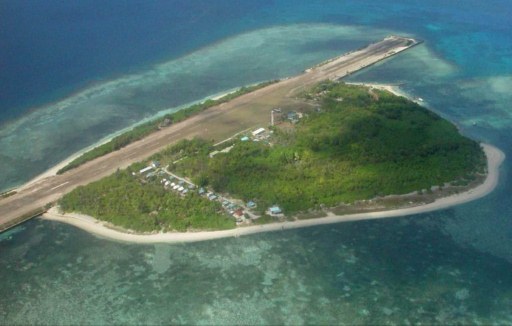
An airfield and some port installations built on an artificial island in the South China Sea is the physical representation of the geopolitical worries of the People’s Republic of China and its neighbors.
The small, artificial island was built by China over the last two years, in a region not only of enormous strategic interest, but also one in which its interests clash with those of other coastal nations and with the predominant global naval power: the United States.
Both China and the United States assert the need to guarantee security and navigability in an area that extends more than 600 km to the southeast of the Chinese coast, and in fact covers a maritime route through which more than 50 percent of the world’s oil and 80 percent of China’s imports and exports pass.
China’s claims over the Paracel Islands and the Spratly Islands archipelago encounter resistance not only from countries such as Vietnam, the Philippines and Malaysia, but also from Taiwan’s sovereignty claims. Aside from the strategic importance, China asserts historical rights over the islands that in times past served it as a refuge, and as bases to replenish for its seafarers and fishing boats.
Certainly these historical rights give some validity to its claims; however, they do not contribute to the tranquility of its neighbors, who see an operation in which the giant of the North seeks to take hold of an area rich in fish and mineral resources, including hydrocarbons.
It could be said also that the United States isn’t disinterested in a dispute that could alter the balance of power in the region. After all, the United States is a naval power guided officially by its desire to guarantee freedom of navigation, and as a corollary its control of commercial routes around the world.
Perhaps the Chinese actions will serve as a pretext to give rise to a sector of the Philippines to ask for the re-establishment of a U.S. naval base, as a form of supporting its position against China’s growing military power.
Vietnam is also not without nervousness with regard to Beijing’s intentions. During the Vietnam War, contrary to the U.S. position, it ceded its territorial rights to China, who was its protector, but later, and after the 1979 Sino-Vietnamese War, reiterated its claims. For Malaysia, which is a commercial power, the region is strategic, especially considering that it has territory geographically divided between the Vietnamese peninsula and the island of Borneo.
There is more to it than this, however. As well as China now seeking to assume its role in the world, the so-called “Middle Kingdom,” which always looked with disdain and suspicion at the outside world, it is now interacting with it, in part to strengthen its position and in part to avoid humiliations, like those caused by its isolation and technological backwardness, inflicted on it by the Europeans particularly during the 19th century.
Certainly the nationalist claims are important, but above all, it is the demands of the 21st century for a world power that cannot forget the difficulty it had learning that it could not ignore the rest of the world or its own geopolitical situation, but it seems it must now learn how to exercise its power.

Leave a Reply
You must be logged in to post a comment.